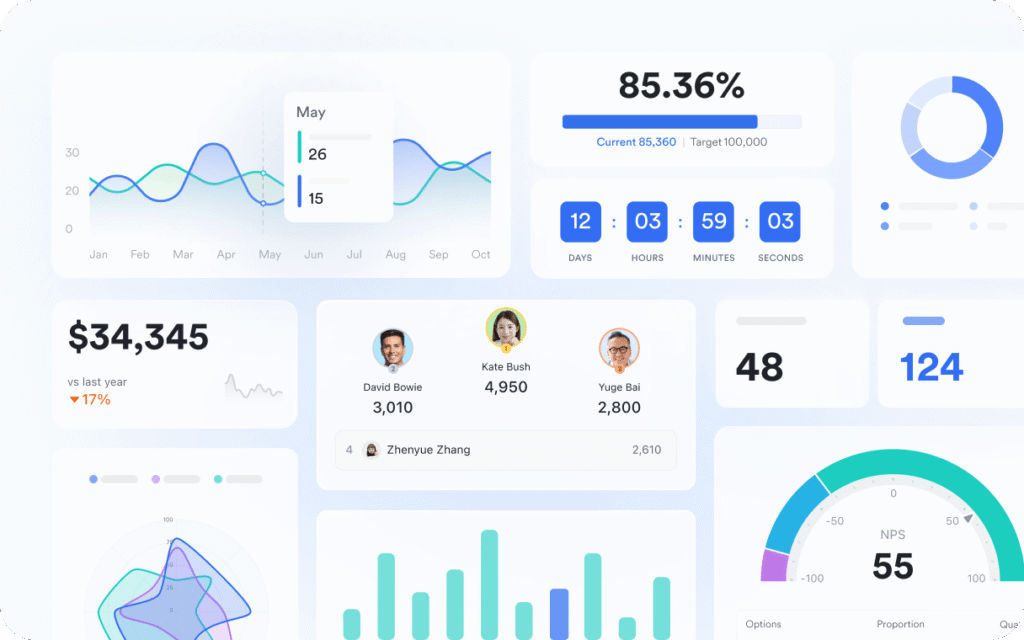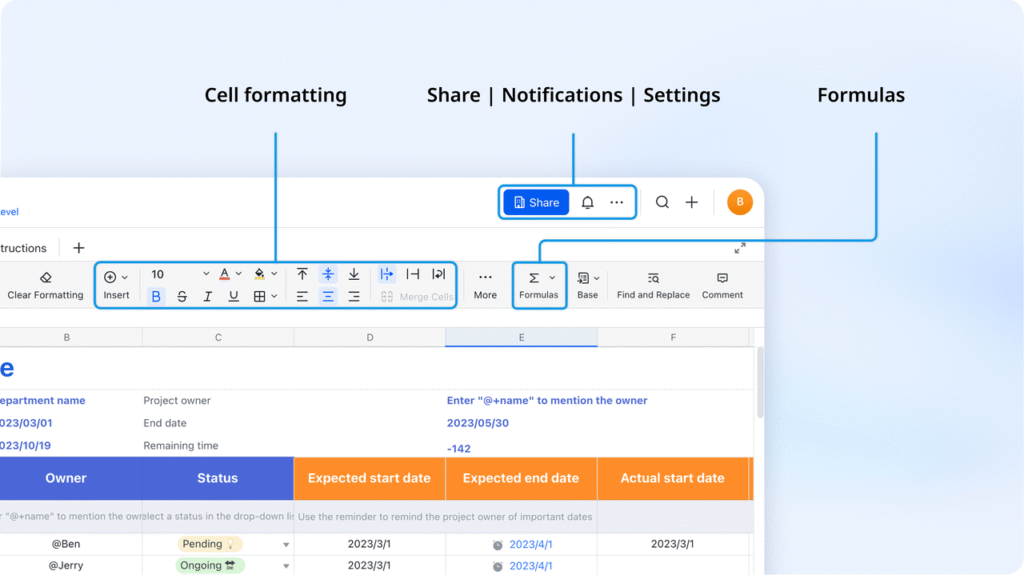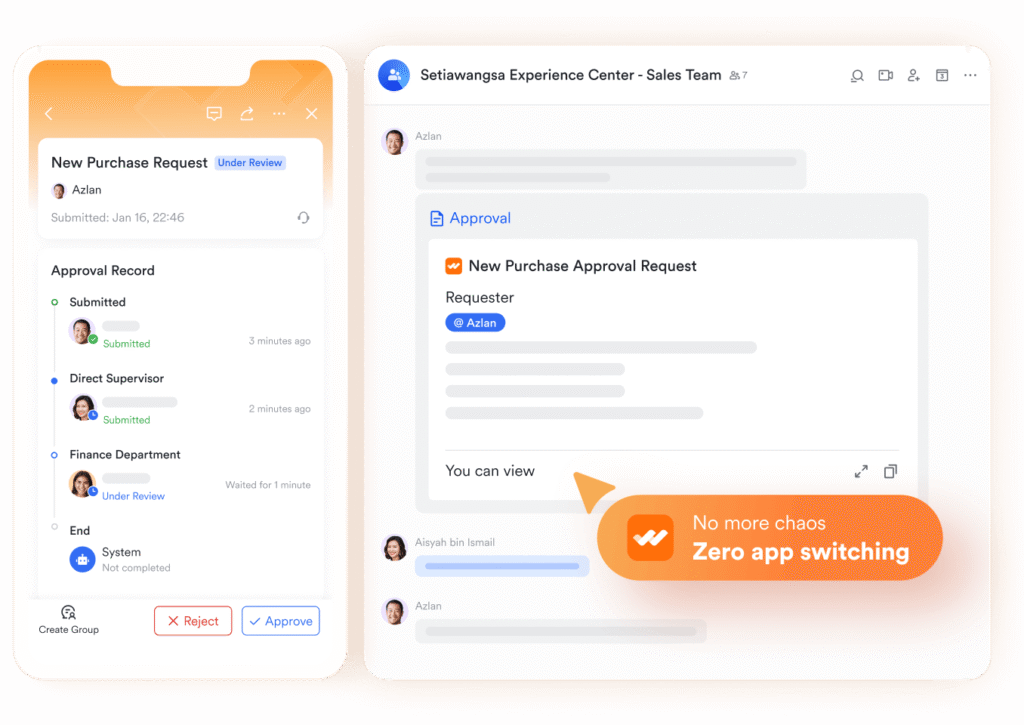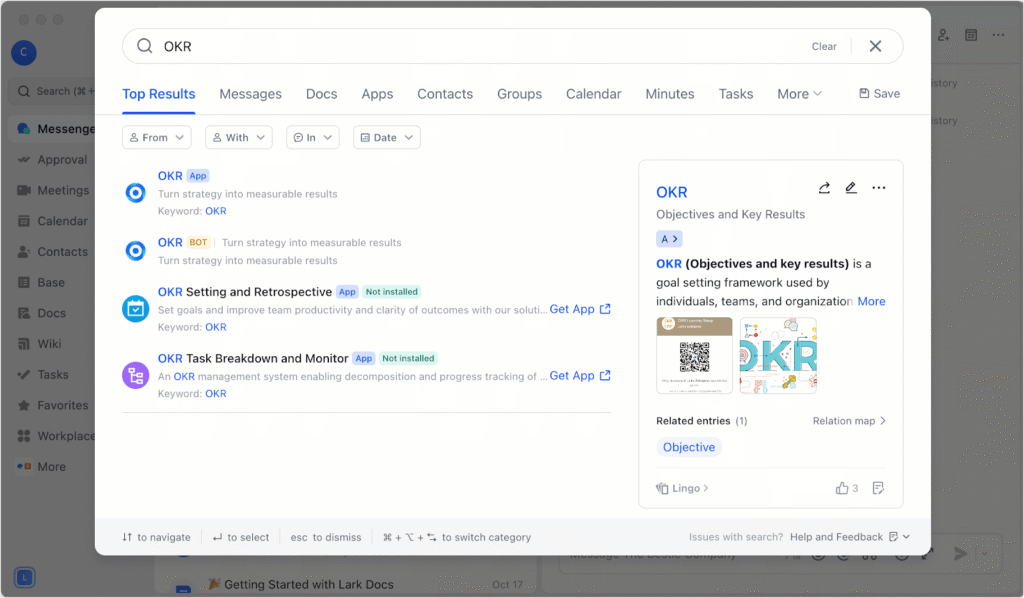Current companies don’t fail due to a lack of ideas; they fail because their own processes are disjointed. The sales team is tracking leads in one software application, finance is doing reports in another, and project due dates are posted in yet another app altogether. This creates a fragmented experience: there are multiple opportunities for the same work to be duplicated across teams, decisions are made slower, and opportunities are lost.
Unified project management tools change dynamics by consolidating a fragmented set of systems into a singular connected platform. Employees are able to quickly move from planning to implementation without reconciling a rough patch of applications. Lark highlights how a single daily collaborative tool can transform a fragmented process into one that flows smoothly and can be replicated for growth.
Lark Base: Building a flexible foundation for projects

Every business process needs structure, and Lark Base provides it through customizable databases. Unlike static spreadsheets that quickly become outdated, Base adapts to different workflows. Marketing can use kanban boards for campaigns, HR can track hiring pipelines, and product teams can monitor release timelines.
Base also reflects the core design principle of a modern CRM app, giving sales teams a unified place to manage client information. Leads, conversations, and follow-up tasks stay connected instead of being spread across multiple tools. This ensures decisions happen faster because everyone works from the same live data. For growing businesses, Base becomes the cornerstone where processes are no longer fragmented but aligned under one roof.
Lark Sheets: Turning numbers into shared insights

Data is essential for decision-making, but when spreadsheet assets are in an inbox or various dark drives, it can require more time to reconcile versions rather than analyzing results. Lark Sheets solves this issue because it makes data collaborative and live.
For example, finance teams can update their budgets simultaneously, and operations can manage inventory, all without duplicating files. A single Sheet can be linked with Base or Docs, ensuring insights flow directly into actionable projects. For instance, if a quarterly financial model is built in Sheets, it can inform marketing campaign spend or even hiring decisions in real-time. Consolidating data in Sheets turns raw numbers into actionable insights rapidly, moving the business forward.
Lark Approval: Streamlining decisions with automation

Approvals are often where processes stall. Waiting for sign-offs across email threads wastes days, slows execution, and frustrates employees. Lark Approval addresses this by providing a structured space where requests are submitted, tracked, and resolved.
This is where the value of an automated workflow stands out. Expense claims can route automatically to finance, leave applications to HR, and project proposals to managers. Notifications are triggered without manual follow-ups, and overdue requests are escalated automatically. What once required repeated reminders now happens seamlessly. By removing bottlenecks, Approval transforms decision-making from a fragmented step into a smooth flow that accelerates execution.
Lark Wiki: Making knowledge instantly accessible

Business processes suffer when information is not visible and accessible by employees. Too often, policies or instructions that represent best practices are buried in long email chains or lost in old documents, necessitating project teams to unnecessarily re-create answers they should already have. Lark Wiki addresses this issue by enabling a permanent, structured knowledge base for employees.
When teams properly document workflows, compliance, or onboarding, that guidance can be accessed by all employees, as needed. For example, if a new hire needs information on procurement steps, they wouldn’t need to ask their manager—they would find everything they need on Wiki. This can reduce redundant processes and also ensure consistency in processes across departments. Knowledge becomes an asset owned by the whole team or company rather than a single person, allowing execution to be quicker and more reliable.
Lark Mail: Connecting external communication to internal flow

External communication can also be a disconnect with internal processes. A vendor approval, client request, or partner update may have come through email, but no one builds that communication into a project management process. This inevitably creates inefficiency, as employees have to always be duplicating and transferring the necessary information from email into the process they are creating.
With Lark Mail, work communication happens within the same platform as all work activities, ie. tasks, projects and documents. A supplier’s contract approval, for example, can be linked beforehand within a Base or attached directly to a task that doesn’t necessitate going back to one of possibly hundreds of email chains. This takes away the habit of duplicating important updates within other tools and provides much more seamless access and accumulation of communication on significant work. For businesses looking to streamline, Mail keeps external and internal flows aligned.
Lark OKR: Aligning execution with strategy

Tasks require not just efficiency but direction too. And without any shared alignment, your teams are just as likely to move quickly on the wrong priorities. Lark OKR ensures daily work is aligned with the broader organizational goals. You have defined objectives, measurable key results, and visibility into progress across departments.
For example, if a company is focused on expanding into a new market, they can simultaneously drive a sales outreach, marketing campaign, and operational readiness under the same OKR. All progress updates from Base or Tasks feed directly into tracking progress, ensuring leadership can respond quickly if progress needs to shift. OKR turns disjointed activity into coordinated execution, ensuring speed is kept in line with the purpose.
Conclusion
While fragmented processes may allow teams to operate, they may limit growth. Each disconnected tool can lead to duplicates, rerouting efforts to hunt down existing work, missed deadlines, and ultimately confusion all costly time for organizations. Unified platforms like Lark create a better solution for an environment where communication, planning, data, and decision-making can flow together.
Base structures projects, Sheets enables actionable real-time insights, Approval streamlines decisions with automation, Wiki can be a knowledge repository, Mail aligns external communication, and OKR connects execution efforts to a strategy. Collectively, they offer an opportunity to eliminate fragmentation by replacing it with clarity, speed, and alignment.
If we’re talking about a growing business case, then it’s simple: efficiency doesn’t come from more tools, but from the unification of those tools. The future belongs to organizations that transition from complexity to flow—and unified platforms are the system making it happen.







/socialsamosa/media/media_files/2zHb3sGz3BcGQQrVtOoh.png)
